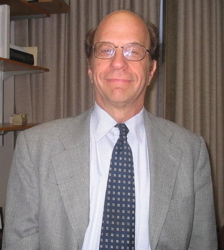Catching melanoma early through education
Intervention study targets a high-risk group: patients' siblings

An aggressive educational intervention targeting siblings of melanoma patients led to dramatic improvements in the rate of skin self-examinations, according to a recent BU dermatology study. These self-examinations can catch melanoma early, making it easier to prevent the disease from spreading.
Published in the August 15 issue of the American Cancer Society journal Cancer, the study reveals that educational intervention “has a moderately strong effect among siblings of melanoma patients, with intervention increasing the likelihood that they will carefully examine their skin by 82 percent,” says study author Alan Geller, a School of Medicine research associate professor of dermatology.
The diagnosis of one family member provides “an important opportunity to intervene with others in a high-risk group who may experience a teachable moment,” says Geller.
More than 400 siblings were randomly assigned to receive either “usual care” or an intervention that included mailed materials, personal telephone counseling from a health educator (timed to follow receipt of the mailed literature), and linkages to free screening programs. Families in the usual care arm received a suggestion from the physician that patients diagnosed with melanoma notify family members about their diagnosis and encourage the family members to be screened. “At 12 months, intervention siblings were more likely to examine all moles, including those on the back,” says Geller.
However, the study found that the latter “intensive care” group was no more likely than the group that received no melanoma education to use sun protection or visit the doctor.
More than one million new cases of skin cancer are diagnosed annually, and 10 percent of these are melanoma, which kills some 8,000 Americans a year, according to the American Academy of Dermatology. Melanoma arises from pigmented cells called melanocytes that can rapidly spread throughout the body. Most melanoma cases are caused by damage to the melanocytes from the sun, but the disease can be detected early if moles are checked for changes in appearance.
“This study is one of the first, to our knowledge, to address skin cancer risk-reduction strategies in a sample of individuals who have a recent family diagnosis of melanoma,” says Geller.
As for the lack of an increase in both groups’ use of sunscreen, an earlier study by Geller published in the April issue of Pediatrics revealed that a diagnosis of skin cancer in the family doesn’t necessarily increase one’s use of skin protection products. Geller found that children of those with skin cancer are just as negligent as the general population in protecting their skin from sunburn.
At the beginning of the parent-child study, Geller thought that the parent diagnosis would have had a stronger effect. “I would have thought that the child whose mom had been diagnosed with skin cancer would have been more likely to have had better sunscreen use and fewer sunburns than kids who had no personal or family affiliation with skin cancer. The surprise was the fact that the children in each of these groups were really quite similar to each other, far more so than I expected.”
The studies provide significant insight into identifying the behaviors that can be modified, say the researchers. The results suggest that having a family member with skin cancer is not enough to prompt a change in one’s skin protection practices, but receiving information about the disease after it impacts the family can lead to more skin self-examinations. Regular, whole-body skin exams are the most effective screening tool to detect melanomas before they spread and become fatal.
In the sibling study, both groups’ lack of an increase in sun protection and doctor visits “might suggest that standard education of patients in academic teaching hospitals is sufficient,” the researchers wrote. “However, sharper differences might emerge if this study was replicated in nonacademic settings.”
Geller believes that a higher risk of skin cancer is based partially in genetics — studies show that melanoma risk is two to eight times higher among people with a father, mother, or sibling with the disease. “But melanoma is still a preventable disease,” he says. “We can’t change our skin type, our color, the color of our hair, or our parents’ or grandparents’ past family history for skin cancer. But we can change our behavior regarding sun protection and skin self-examination.”